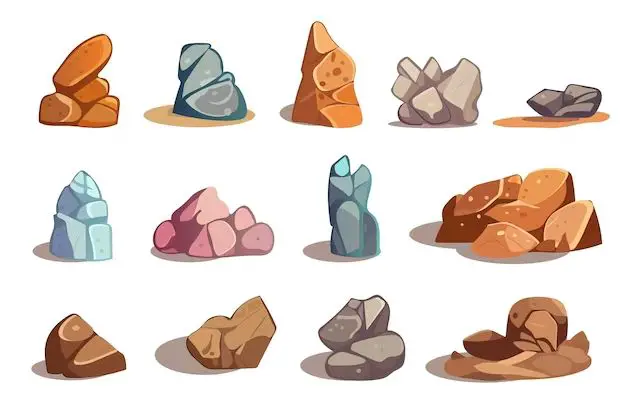Getting a rock or mineral appraised can seem daunting, but it doesn’t have to be. Here are some quick answers to common questions about rock appraisals to help you get started.
What is a rock appraisal?
A rock appraisal is a professional assessment of the identity, quality, and market value of a rock specimen. An accredited gemologist or appraiser examines the rock’s physical properties under magnification and uses specialized knowledge to determine what type of rock or mineral it is, if it’s a natural specimen or synthetic material, and how much it’s worth.
Why get a rock appraised?
There are several reasons you may want to get a rock appraised:
- To identify an unknown rock specimen
- To verify if a rock is natural or synthetic
- To determine the market value for selling or insuring purposes
- For legal proceedings involving minerals or mining claims
- To assess specimens for a mineral collection
What factors affect a rock’s value?
Some key factors that influence a rock specimen’s value include:
- Rarity – Rare mineral species or crystal formations are more valuable.
- Quality – Specimens with excellent clarity, vibrant colors, and superior aesthetic appeal fetch higher prices.
- Provenance – The geographic source locality, especially famous mining regions, can increase value.
- Size – Larger specimens tend to be worth more, especially with crystals.
- Demand – Rocks and minerals that are prized by collectors and museums command higher prices.
What information should you have before an appraisal?
It’s helpful to provide the appraiser with any known background information on the specimen, such as:
- Where and when it was found
- The geologic formation or deposit type
- Any collecting locality data or mine name
- Known mineral species if identified
- Any specialized cleaning or preparation it has undergone
- Your estimated value range
What does the appraisal process involve?
A typical rock or mineral appraisal involves these steps:
- Initial consultation to review background details about the specimen and reason for appraisal.
- Physical examination of the rock under magnification for identification and description.
- Research into comparable specimens and market data.
- Analysis to determine authenticity, quality factors, provenance, and valuation.
- Preparation of a detailed appraisal report stating identity, characteristics, and final estimate of fair market value.
How much does a rock appraisal cost?
Appraisal fees vary depending on the appraiser’s experience, specimen type, testing needed, and report detail. Typical costs range from:
| Appraisal Type | Typical Cost Range |
|---|---|
| Basic Identification | $20 – $50 |
| Valuation Letter | $50 – $100 |
| Detailed Report with Testing | $100 – $500 |
Rare or highly valuable specimens often incur higher fees. Many appraisers provide free verbal estimates, with a fee only for their full written report. It’s reasonable to request an estimate of the total cost prior to having your rock formally appraised.
How do you find a qualified rock appraiser?
There are a few ways to find a reputable rock and mineral appraiser:
- Search credentialed professional organizations like the American Society of Appraisers or International Society of Appraisers for accredited members.
- Contact major auction houses like Bonhams or Christie’s that have mineral departments.
- Ask for referrals from museums, mineral clubs, geology departments at universities, or collectors in your area.
- Look for appraisers with credentials like FGA (Fellow of the Gemological Association) or PG (Professional Geologist).
- Review an appraiser’s experience, qualifications, example past appraisals, client testimonials, and professional affiliations.
How can you prepare your rock for appraisal?
To prepare a rock specimen for appraisal:
- Clean the specimen with water, mild soap, soft toothbrush, dental pick, or wooden skewer to remove any dust or loose matrix material.
- Do not use any chemicals, metal tools, or high-pressure water cleaning methods.
- Leave the specimen as undamaged and intact as possible.
- Package it very securely in bubble wrap or foam to prevent breakage.
- Label with your name, contact information, and specimen details like location found.
What does an appraisal report contain?
A professional rock or mineral appraisal report typically includes:
- Date of the appraisal and name of appraiser/company
- Description of the specimen including mineral species, crystal form, color, distinguishing features
- Locality information like where it was found or obtained
- Dimensions, weight, quantity of pieces
- Detailed results of examination and any testing performed
- Photographs of the specimen from multiple angles
- Comparable sales data used to determine value
- Market value conclusion and amount of insurance recommendation
- Appraiser’s credentials, signature, and statement of liability limits
Conclusion
Getting a rock appraised requires finding a qualified professional appraiser, providing key details about your specimen, and understanding the valuation process. With proper preparation and research, you can get an accurate appraisal to verify your rock’s identity, authenticity, characteristics, and monetary value based on current market data.

